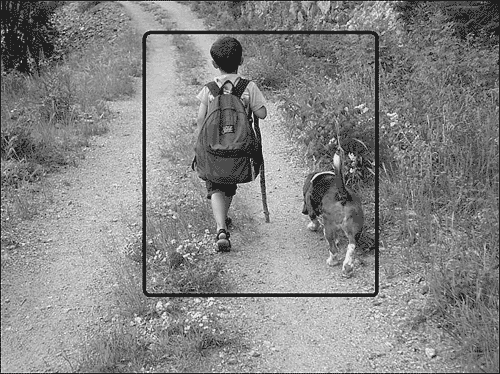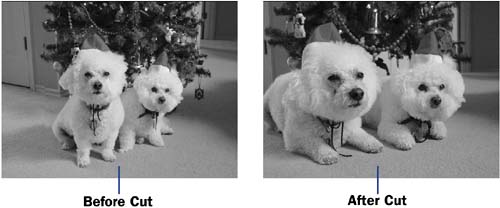3 About the Camera s Perspective
| < Day Day Up > |
3 About the Camera's PerspectiveBefore You Begin See Also Your camera sees the world differently from the way you see the world. The camera's peripheral vision is more limited. Begin looking at your subject matter from the camera's viewpoint. By doing this, your videos will more accurately reflect what you want them to portray. By limiting the peripheral vision, your video might need more panning to capture a scene's contextual meaning. For example, a flag waving amid tombstones in a cemetery portrays a much different effect from a flag waving atop a baseball stadium. Unless you pan or zoom out from the flag, your camera will catch only the flag, and its context will be lost. The camera's eye sees less peripherally than you do. KEY TERM
You'll quickly learn, especially when you're trying to tell a story, as you'd do in a movie or when creating an instructional or sales video, that small improvements in the way you film will greatly enhance the look of your production. Although you can read about shooting effectively, it will be the school of hard knocks that really drills proper video techniques into your head. For example, jump cuts often occur in amateur films . The producer might not even notice that a jump cut occurred. Even the audience might not notice it ”consciously. Unconsciously, a sloppy jump cut can break the flow of the movie. You'll want to stay alert to ensure that a person's position in one shot matches the same position in the next shot if you want to eliminate jump cuts in your movies. If you're shooting live action taking place in front of you, you won't be able to eliminate jump cuts, but if you're in control of the subject matter, teach your subjects to keep their hands and bodies in the same position from shot to shot if you must take multiple shots in the same scene. KEY TERM
Jump cuts in audio can occur as well as in video, so make sure the sound levels and surrounding noise don't differ too much from shot to shot within the same scene's time period. TIP
The subjects' positions changed too much between shots because of the jump cut. Panning is used conservatively in most movies and television shows. The pros don't move their camera often, and neither should you ( see 5 About Reducing Motion and Relying on Your Subjects ). In addition, one of the common mistakes video camera owners make is zooming too much ( see 11 Zoom Effectively ). In some home movie videos, the camera is constantly zooming in and out. The end result is the audience must focus on where the zoom is taking them next versus the scene itself. The ride on which lots of excessive zooming takes an audience is not a good one. TIP
|
| < Day Day Up > |
EAN: 2147483647
Pages: 169
- ERP System Acquisition: A Process Model and Results From an Austrian Survey
- Context Management of ERP Processes in Virtual Communities
- Data Mining for Business Process Reengineering
- Healthcare Information: From Administrative to Practice Databases
- Development of Interactive Web Sites to Enhance Police/Community Relations



